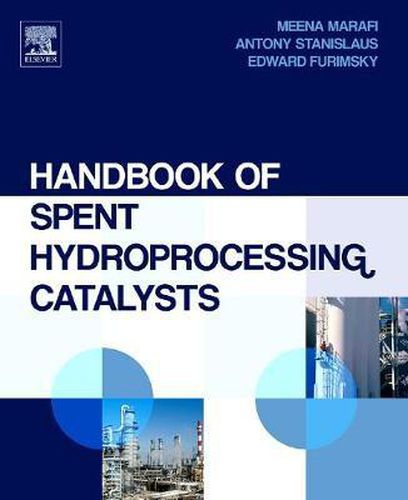Readings Newsletter
Become a Readings Member to make your shopping experience even easier.
Sign in or sign up for free!
You’re not far away from qualifying for FREE standard shipping within Australia
You’ve qualified for FREE standard shipping within Australia
The cart is loading…






7 ½ X 9 ¼ in
1. INTRODUCTION
DEVELOPMENT IN PETROLEUM REFINING 2 .1. Conventional Refineries 2.2. Revamped conventional refineries
2.3. Advanced Refineries
HYDROPROCESSING OF PETROLEUM 3. 1. Feeds for Hydroprocessing
3.1.1. Light feeds 3.1.2. Medium hea vy feeds 3.1.3. Heavy and extra heavy feeds 3.2. Hydroprocessing r eactions 3.3. Hydroprocessing Catalysts 3.3.1. Structure and chemi cal composition 3.3.1.1. Co(Ni)-Mo(W)-S phase 3.3.1.2. Brim site m odel 3.3.1.3. Co-Mo-S? phase 3.3.1.4. Effect of support 3.3.1.5 . Physical properties 3.3.1.6.Improved hydroprocessing catalysts 3 .4. Hydroprocessing Reactors and Processes 3.4.1. Fixed bed reactor s ystems 3.4.1.1. Unibon process 3.4.1.2. ARDS and Hyvahl processes< BR>3.4.2. Moving and ebullated bed reactors. 3.4.3. Comparison of hyd roprocessing reactors
CATALYST DEACTIVATION 4.1. Deactiv ation Due to Structural Change of Catalyst 4.2. Deactivation by Coke and Nitrogen Bases 4.3. Combined Effect of Coke and Metals on Deactiv ation 4.4. Effect of Temperature and Hydrogen Pressure 4.5. Effect
$9.00 standard shipping within Australia
FREE standard shipping within Australia for orders over $100.00
Express & International shipping calculated at checkout
7 ½ X 9 ¼ in
1. INTRODUCTION
DEVELOPMENT IN PETROLEUM REFINING 2 .1. Conventional Refineries 2.2. Revamped conventional refineries
2.3. Advanced Refineries
HYDROPROCESSING OF PETROLEUM 3. 1. Feeds for Hydroprocessing
3.1.1. Light feeds 3.1.2. Medium hea vy feeds 3.1.3. Heavy and extra heavy feeds 3.2. Hydroprocessing r eactions 3.3. Hydroprocessing Catalysts 3.3.1. Structure and chemi cal composition 3.3.1.1. Co(Ni)-Mo(W)-S phase 3.3.1.2. Brim site m odel 3.3.1.3. Co-Mo-S? phase 3.3.1.4. Effect of support 3.3.1.5 . Physical properties 3.3.1.6.Improved hydroprocessing catalysts 3 .4. Hydroprocessing Reactors and Processes 3.4.1. Fixed bed reactor s ystems 3.4.1.1. Unibon process 3.4.1.2. ARDS and Hyvahl processes< BR>3.4.2. Moving and ebullated bed reactors. 3.4.3. Comparison of hyd roprocessing reactors
CATALYST DEACTIVATION 4.1. Deactiv ation Due to Structural Change of Catalyst 4.2. Deactivation by Coke and Nitrogen Bases 4.3. Combined Effect of Coke and Metals on Deactiv ation 4.4. Effect of Temperature and Hydrogen Pressure 4.5. Effect